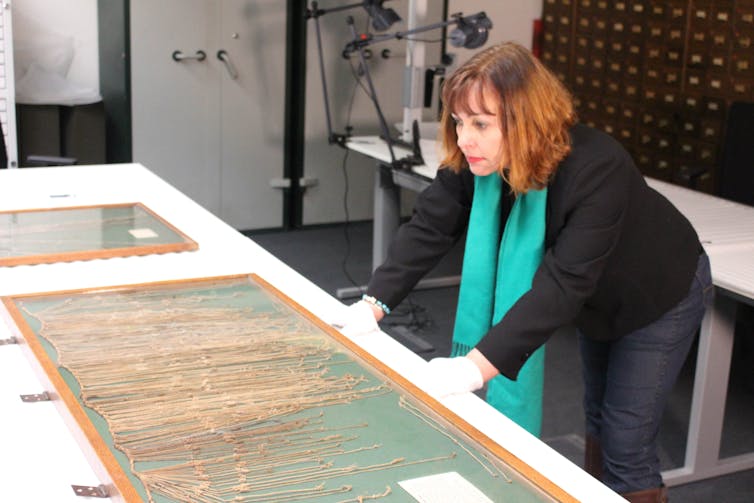Source: The Conversation – Canada – By Jean Ketterling, Assistant Professor, Political Studies – Women’s and Gender Studies Program, University of Saskatchewan

Following a campaign by Australian anti-porn organization Collective Shout, the video game distribution platforms Steam and itch.io recently made changes to their policies about hosting games with adult themes.
While Steam removed many games, the campaign has had a particularly strong effect on itch.io because it is a smaller company with low barriers for creators who want to publish their games. The changes meant all content deemed adult NSFW (not suitable for work) on itch.io was unsearchable.
The campaign has also involved pressuring payment processing companies to “cease processing payments” to platforms hosting games that Collective Shout views as objectionable.
Itch.io has since announced it will be re-indexing free adult NSFW content, making it searchable again, and is “actively reaching out to other payment processors that are more willing to work with this kind of content.”
The battle over NSFW content is provoking concern about censorship and threatening game makers’ livelihoods. As game studies scholars who focus on sex, sexuality, gender and sexual violence, we are concerned about censorship campaigns that target pornography, and the knock-on effects on queer creators and sexual education content.
What happened to NSFW content on itch.io and Steam?
According to a timeline published by Collective Shout, the campaign began in March 2025 as an effort to have the controversial game No Mercy removed from Steam. While the developer removed the game in April, Collective Shout then called on payment processors to stop processing payments for similar content.
The campaign is less interested in the content or context of these games than achieving the organization’s broader anti-pornography goals.
As journalist Emanuel Maiberg writes, while No Mercy may aim to shock, it retreads many commonplace pornographic tropes, and Steam offers users tools to filter out adult content.
Nonetheless, bringing such games to payment processors’ attention set off a chain reaction and provoked heightened scrutiny on a wide range of sexual content.
On July 16, the third-party data website Steam DB posted that Steam had updated its content policy and removed many games that appeared to have incest themes.
On July 24, itch.io released a statement explaining that it had de-indexed all adult NSFW content while it conducted a “comprehensive audit of content” to ensure that the platform “can meet the requirements of our payment processors.”
De-indexing content makes it impossible to find via a browser search (although it remains available through a direct link), provoking concern about censorship and loss of livelihood.
A counter-campaign to protest censorship also emerged and various industry groups responded.
Platform policies and pornography
Feminist movements have a long history of debating pornography, and nuanced research is readily available that carefully analyzes pornography, including in a dedicated academic journal. Similarly, there is a growing body of research on sex and sexuality in video games.
Anti-pornography movements, however, do not seem to be informed by these discussions and debates. Rather, campaigns like Collective Shout’s rely on feelings of discomfort, disgust and shock to bring about broad censorship.
This can undermine the diversity of sexual expression, punishes non-normative and kinky content and disproportionately affects LGBTQ+ creators.
Steam’s updated policy states that developers should not use their platform to publish content that violates payment processor or card network policy, “in particular, certain kinds of adult only content.”
Itch.io clarified its existing policy by providing a list of content prohibited by payment processors, including real or implied non-consensual content, underage or “barely legal” themes, incest or pseudo-incest content, bestiality or animal-related content and fetish content involving bodily waste or extreme harm, among others.
Such prohibitions may feel like common sense. However, there is a danger these provisions could be used to de-platform broad swaths of content. This could include games made by survivors of sexual violence or child abuse reflecting on their experiences, or consent education games such as Hurt Me Plenty.
Research has shown similar policies on porn platforms are interpreted so broadly that they de-platform otherwise legal content. When implemented, these policies impact creators’ abilities to earn a living.

(Robert Yang)
De-platforming sex in games
Video game censorship is not new. American game developer Brenda Romero describes the creation of the Entertainment Software Rating Board (ESRB) in 1994 as the industry’s attempt to self-regulate after several controversies regarding violent and sexual content.
The ESRB was created by the Entertainment Software Association to assign age ratings to games in North America. While creating the ESRB helped stave off governmental regulation, it did so by curtailing the space for sexual expression in games.
Video games with explicit sexual content are likely to receive an adults only rating and large box chain retailers may refuse to stock them.
To be economically viable, game developers are forced to remove references to sexual activity from their games, as was the case with the infamous “hot coffee” modification in Grand Theft Auto: San Andreas.
This type of self-censorship is a problem that extends beyond games. According to feminist media scholar Susanna Paasonen, platforms often conceptualize sex as risky, objectionable and lacking expressive value, imposing their subjective understanding of obscenity and risk on culturally diverse audiences.
Many arguments for censorship rely on an assumption that games predominately have an audience of children. However, the average American gamer is 36 years old, and removing access to diverse sexual content for adults is to deny an entire realm of human experience.
Thus, the “de-sexing” of platforms is a problem in and of itself.
Payment processors dictating content
Collective Shout’s appeal to payment processors is a strategy that exploits the power these companies have, because payment processors and credit card networks have significant influence on the sex industry. By refusing to process payments for certain products or services, they have the power to effectively censor anything they deem unnacceptable.
The process leaves little room for transparency around what qualifies as unacceptable, and can leave those impacted by such bans with limited ability to challenge them.
Given that payment processors focus more on protecting their brand reputation than promoting a diversity of sexual expression, they are vulnerable to the agendas of outspoken organizations that use them as a backdoor to police sexual expression.
As researchers, we are equally concerned with the ways these policies threaten the preservation of video games. Despite their long history, sex and pornography games are a neglected archive.
It is imperative to build and sustain public game archives that can withstand such targeted attacks and preserve the record of human desire from multiple perspectives.
![]()
Jean Ketterling is the principal investigator of The Pornography, Platforms & Play Project, which is supported in part by funding from the Social Sciences and Humanities Research Council of Canada. She is the vice-president of the Canadian Game Studies Association.
Ashley ML Guajardo is president of the Digital Games Research Association.
Carl Therrien and Kenzie Gordon do not work for, consult, own shares in or receive funding from any company or organisation that would benefit from this article, and have disclosed no relevant affiliations beyond their academic appointment.
– ref. Censoring video games with sexual content suppresses the diversity of human desire – https://theconversation.com/censoring-video-games-with-sexual-content-suppresses-the-diversity-of-human-desire-262436








